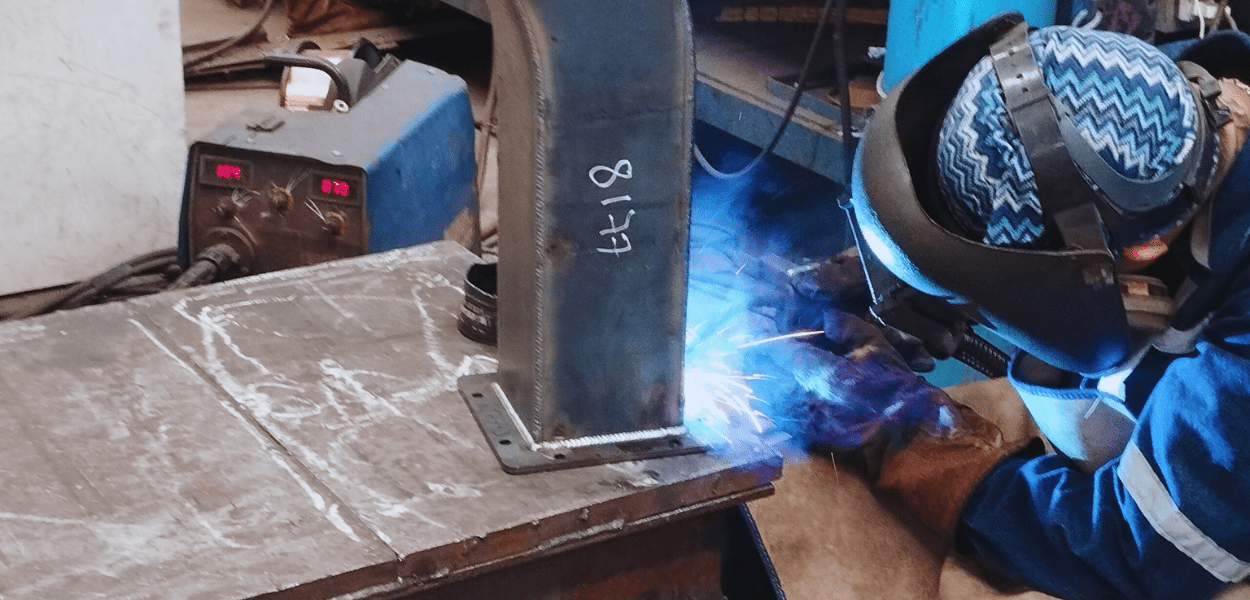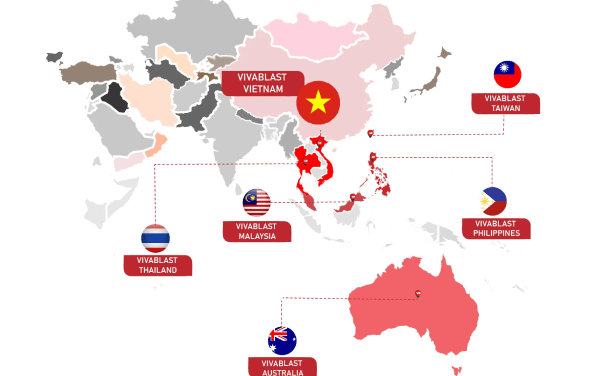ผู้ผลิตเหล็กทำอะไร?
Steel fabricators are the metalworking professionals who transform raw steel shapes into custom-made structures and components. Their job involves a variety of tasks, including:
- Cutting: Using specialized equipment like plasma cutters, oxy fuel torches, or saws, they precisely cut steel sections according to engineering plans.
- Drilling: They create precise holes in steel components using drilling machines.
- Bending: Steel fabricators bend steel sections to achieve the desired shapes using bending brakes or press brakes.
- Welding: This is a crucial skill, as they join steel pieces together using various welding techniques like arc welding or MIG welding.
- Assembling: Fabricators thoroughly put together the individual steel components to form the final structure, ensuring proper fit and alignment.
- Quality Control: Throughout the process, they conduct inspections to ensure the fabricated steel meets the required specifications and adheres to safety standards.
In essence, steel fabricators act as partners, collaborating with engineers and clients to bring design concepts to life. Their expertise is vital in various industries such as construction, mining, manufacturing, and energy.

What are the benefits of structural steel?
The reason why structural steel is among the top materials used within the manufacturing as well as construction industry is because they offer a lot of benefits, even long-lasting ones too, such as:
เป็นมิตรกับสิ่งแวดล้อมยั่งยืนและทนทาน
โลกที่เราอาศัยอยู่ตอนนี้กำลังก้าวไปสู่เป้าหมายในการปกป้องธรรมชาติสำหรับคนรุ่นอนาคตโดยใช้ผลิตภัณฑ์ วัสดุ ฯลฯ ที่สะอาดและยั่งยืน และเหล็กก็ถูกจัดอยู่ในรายการ เหล็กโครงสร้างไม่เพียงแต่เป็นมิตรกับสิ่งแวดล้อม แต่ยังยั่งยืนและทนทานอีกด้วย!
ประการแรก เหล็กสามารถรีไซเคิลได้และยังมีคาร์บอนต่ำซึ่งช่วยในการปล่อยก๊าซเรือนกระจก ด้วยคุณสมบัตินี้ เหล็กจึงถือเป็นวัสดุที่ "เป็นมิตรกับสิ่งแวดล้อม" มาก เนื่องจากธุรกิจต่างๆ สามารถรีไซเคิลและนำเหล็กกลับมาใช้ซ้ำได้ซ้ำแล้วซ้ำเล่า โดยสังเกตว่าเหล็กไม่สูญเสียความแข็งแรงหรือคุณสมบัติทางกายภาพอื่นๆ เลย แม้ว่าจะผ่านการรีไซเคิลซ้ำแล้วซ้ำอีกก็ตาม สิ่งนี้ช่วยได้มากในการลดขยะอุตสาหกรรมจำนวนมากที่ปล่อยออกสู่สิ่งแวดล้อม!
ประการที่สอง เหล็กมีความทนทานมากเนื่องจากมีความสามารถในการทนต่อการสึกหรอของสภาพอากาศ แม้กระทั่งพายุที่รุนแรงที่สุด ในความเป็นจริง เหล็กไม่ติดไฟ ดังนั้นคุณจึงไม่ต้องกังวลกับเหตุการณ์เปลวไฟใดๆ วัสดุมีความแข็งแรงและทนทานมากจนสามารถช่วยต้านทานอุบัติเหตุประเภทต่างๆ ที่อาจสร้างความเสียหายให้กับวัสดุอื่นๆ ได้
ประหยัดต้นทุน
อัตราเงินเฟ้ออาจทำให้เกิดความผันผวนของราคา ส่งผลให้ราคาเสนอสูงขึ้น และทุกอย่างที่เกี่ยวข้องกับการก่อสร้างจะมีราคาสูงกว่าเมื่อก่อน การเลือกเหล็กโครงสร้างสำหรับโครงการต่อไปของคุณจะช่วยลดต้นทุนโดยรวมและเพิ่มมูลค่าได้ การใช้เหล็กช่วยให้คุณประหยัดงบประมาณได้มาก เนื่องจากราคาเหล็กยังคงมีเสถียรภาพและราคาไม่แพงสำหรับธุรกิจขนาดใหญ่และขนาดเล็ก ต้องขอบคุณปัจจัยหลัก 4 ประการ ได้แก่ ราคา ต้นทุนการขนส่ง ความทนทาน และการพัฒนาการก่อสร้างในอนาคต
Structural steel is normally priced by weight and as of November 2022, steel prices in general continue to move lower with hot-rolled steel reaching roughly $626/ton and cold-rolled steel at around $879/ton. In addition, structural steel is relatively lightweight compared to other types of framing, which helps big time in reducing the shipping cost. Not only that, structural steel also has great durability as it is regarded as one of the toughest and most durable building materials out there.
The value of steel does not only show in the present but also in the future if and when a project will be modified or expanded. Then, steel framing systems can be reconfigured and expanded into new shapes since they are highly adaptable.
ประหยัดเวลา
ด้วยเหล็กโครงสร้างสำเร็จรูป กระบวนการก่อสร้างจะดำเนินไปเร็วขึ้น เนื่องจากไม่จำเป็นต้องมีกระบวนการตัด เชื่อม และยึดที่หน้างานอีกต่อไป ส่งผลให้ระยะเวลาการทำงานลดลงและยังรวมถึงชั่วโมงการทำงานอย่างมีนัยสำคัญ เมื่อโครงและซองของการก่อสร้างเสร็จสมบูรณ์อย่างรวดเร็ว ผู้เชี่ยวชาญสามารถมุ่งเน้นไปที่การทำงานส่วนที่เหลือให้เสร็จเร็วขึ้น ยิ่งการก่อสร้างสร้างได้เร็วเท่าไร ธุรกิจก็ยิ่งสามารถเริ่มสร้างรายได้และมีส่วนช่วยต่อเศรษฐกิจได้เร็วเท่านั้น
ปลอดภัย
Surprisingly, steel doesn’t catch fire, ignite nor spread flames. In addition, when used in construction and building, stainless steel fabricated parts are resistant to pests such as termites. In some cases, it can be resistant to rust and corrosion when properly coated. Thus, steel can also be cleaned easily is mold resisted. Thanks to this feature, you can easily spot stainless steel fabrication projects in the medical and food service industries.
Is metal fabrication different from steel milling?

Yes, metal fabrication and steel milling are different processes within the metalworking industry, although they can sometimes be interconnected. Here’s a breakdown of the key differences:
Metal Fabrication
- Process: Focuses on shaping and assembling pre-existing metal shapes (often produced through steel milling) into various end products.
- Materials: Works with a wider range of metals besides steel, including aluminum, copper, brass, etc.
- Techniques: Employs various techniques like cutting, bending, welding, drilling, and assembling to modify and join metal pieces.
- Examples: Fabricated products include building frames, pipes, railings, machinery components, etc.
Steel Milling
- Process: Primarily deals with the shaping and transformation of raw steel into various usable forms.
- Materials: Focuses specifically on steel, processing it from its raw form (iron ore) or semi-finished products (like slabs or blooms).
- Techniques: Utilizes large-scale machinery like rolling mills, forging presses, and extruders to shape and refine steel.
- Examples: Steel milling produces various products like sheets, plates, bars, beams, and angles.
What are some steel structure fabrication methods?
Bolted Steel Connections
This method utilizes high-strength bolts to fasten steel components together. It offers advantages like easy assembly and disassembly, which can be helpful for temporary structures or those requiring future modifications.
Welded Steel Connections
Welding is a widely used method that creates permanent and very strong joints between steel pieces. It offers high strength and load-bearing capacity for permanent structures.
Riveted Steel Connections
While less common today, riveting was a traditional method using rivets to join steel elements.
Cast Steel Connections
Cast steel connections are a method for joining steel members using pre-fabricated cast steel components.
Prefabricated Steel Structures
Prefabricated steel structures are a method where the elements of a structure are manufactured off-site in a controlled workshop environment and then assembled on-site at the final location.
Additional Fabrication Methods
- Mechanically Decked Floor Systems: This involves using profiled steel sheets with shear connectors to create a composite floor deck that combines the strength of steel with the fire resistance of concrete.
- Cold-Formed Steel (CFS) Framing: This method utilizes lightweight, pre-formed steel sections for walls, roofs, and non-load-bearing structures. It offers advantages like ease of installation and cost-effectiveness for specific applications.
- Steel Truss Fabrication: Trusses are triangular structures used for roofs and bridges. Fabrication involves cutting, shaping, and connecting steel members to create the desired truss configuration.
- Pipe Fabrication: This is the process of shaping and joining steel pipes for various applications, including pipelines, pressure vessels, and handrails.
Choosing the Right Method
The selection of the most suitable steel structure fabrication method depends on several factors, including:
- Project requirements: Factors like load-bearing capacity, desired permanence, and future modification needs influence the choice.
- Material properties: The type and thickness of steel used can impact the feasibility of certain methods.
- Cost considerations: Different methods vary in cost of materials, labor, and equipment.
- Design complexity: Simple structures may utilize bolts, while complex designs might require welding.
Steel fabrication companies often have expertise in multiple methods, allowing them to select the most appropriate approach for each project.
What are the Main steps of the structural steel fabrication process?
1. Design and Material Acquisition
Project Planning: Engineers develop detailed plans and specifications for the structure, including the size, shape, and quantity of steel components needed.
Material Procurement: Based on the design, the steel fabrication company acquires the necessary steel plates, beams, angles, channels, and other shapes in the required dimensions and grades.
2. Steel Cutting and Drilling
Computerized Cutting: Modern fabrication shops utilize computer-controlled machinery like plasma cutters, lasers, or saws to precisely cut steel components according to the design specifications.
Drilling and Punching: Holes are drilled or punched into the steel components for future connections using bolts, rivets, or welding.
3. Shaping and Bending (if required)
Bending: Depending on the design, specific steel sections may require bending to achieve the desired shapes. This can be done using hydraulic presses, rolling mills, or other specialized equipment.
4. Assembly and Welding
Positioning and Tack Welding: Steel components are positioned and temporarily tack welded together to ensure proper alignment and fit.
Final Welding: Certified welders use various welding techniques (e.g., arc welding, MIG welding) to create strong and permanent joints between the steel elements.
5. Quality Control and Inspection
Rigorous Inspections: Throughout the fabrication process, the steel components undergo thorough inspections to ensure they meet dimensional tolerances, welding quality standards, and any other relevant specifications. This may involve visual inspection, dimensional checks, and non-destructive testing methods.
6. Surface Treatment and Painting (optional)
Sandblasting or Shot Blasting: In some cases, the steel components may be sandblasted or shot blasted to remove surface impurities and prepare the surface for painting.
Painting or Coating: To protect the steel from corrosion and ensure aesthetics, a coat of paint or other protective coating may be applied.
7. Delivery and On-Site Assembly
Packaging and Labeling: The finished steel components are carefully labeled, packaged, and loaded for transportation to the construction site.
On-Site Construction: Steel erectors use cranes and other equipment to lift and assemble the prefabricated steel components according to the design plans.
การผลิตแผ่นโลหะมีราคาแพงหรือไม่?
Unfortunately, there isn’t a precise answer for this question. This is because the cost of the sheet metal fabrication process involved a lot of stages combined. Each stage will have varied prices depending on the demand of the clients / customers and the difficulty of the project.
To break it down, sheet metal fabrication costs can be deciphered by factors such as:
ราคาติดตั้ง
ราคานี้มักรวมค่าใช้จ่ายต่างๆ เช่น การขอใบอนุญาตหรือใบอนุญาตที่จำเป็นสำหรับการติดตั้ง การซื้ออุปกรณ์นิรภัยสำหรับการติดตั้ง การจ้างผู้เชี่ยวชาญที่มีทักษะ และการขนส่งชิ้นส่วนประดิษฐ์ไปยังสถานที่ติดตั้ง
ต้นทุนวัตถุดิบ
ในการผลิตแผ่นโลหะ คุณจะต้องมีวัตถุดิบก่อน ตัวเลือกต่างๆ มีตั้งแต่อะลูมิเนียม ทองเหลือง ทองแดง เหล็ก ดีบุก ไปจนถึงนิกเกิลและไทเทเนียม วัสดุแต่ละชนิดจะมีป้ายราคาที่แตกต่างกันและขึ้นอยู่กับความหนาซึ่งส่งผลต่อต้นทุนวัสดุและค่าแรงด้วย อีกสิ่งหนึ่งที่ควรทราบคือต้นทุนวัตถุดิบสามารถเปลี่ยนแปลงได้เนื่องจากสถานการณ์ต่างๆ เช่น อัตราเงินเฟ้อ การขนส่ง และห่วงโซ่อุปทานด้วย
ต้นทุนสำหรับงานสั่งทำพิเศษ
สำหรับโครงการที่ซับซ้อนและปรับแต่งได้ บางครั้งต้องใช้แรงงานคนหรือเครื่องกล ในบางกรณีอาจจำเป็นต้องใช้ทั้งสองอย่าง บ่อยครั้งที่โลหะแผ่นสั่งทำพิเศษต้องใช้ช่างแปรรูปที่มีทักษะสูงมาก และอาจรวมถึงช่างเชื่อมที่ได้รับการรับรอง ช่างเทคนิคการประกอบมืออาชีพ ฯลฯ เพื่อที่จะสร้างสรรค์งานด้วยความใส่ใจในรายละเอียดเป็นอย่างสูง เพื่อให้ได้ผลิตภัณฑ์ที่แม่นยำยิ่งขึ้นและผลลัพธ์ที่รวดเร็วยิ่งขึ้น ซอฟต์แวร์ CAD/CAM ยังสามารถนำมาใช้ในกระบวนการผลิตได้ และจะต้องอาศัยผู้เชี่ยวชาญเพื่อใช้เครื่องมือและอุปกรณ์เฉพาะทาง
ต้นทุนการตัดเฉือน
กระบวนการผลิตโลหะแผ่นอาจมีขั้นตอนมากมายในการผลิตผลิตภัณฑ์ขั้นสุดท้าย ขั้นตอนต่างๆ ได้แก่ การเคลือบ ตัด เชื่อม ดัด ฯลฯ แต่ละขั้นตอนจะต้องใช้เครื่องจักรและอุปกรณ์เฉพาะในการทำงาน ยิ่งการตัด การเชื่อม และการโค้งงอที่จำเป็นสำหรับโครงการของคุณน้อยลง ค่าใช้จ่ายก็จะยิ่งน้อยลง
ความซับซ้อนของการออกแบบ
ตามชื่อที่แนะนำ ยิ่งวัสดุของคุณทำจากวัสดุที่ง่ายกว่า ค่าใช้จ่ายก็จะยิ่งน้อยลงเท่านั้น ในทางกลับกัน หากโครงการของคุณมีการออกแบบที่ซับซ้อน จะต้องมีขั้นตอนและเวลาในการสร้างผลิตภัณฑ์ขั้นสุดท้ายมากขึ้น ส่งผลให้ราคาสูงขึ้น
ค่าจัดส่งสุดท้าย
โดยรวมแล้ว การผลิตโลหะแผ่นสามารถเริ่มต้นได้ตั้งแต่ระดับพื้นฐาน $300 จนถึง $4000 ขึ้นอยู่กับความต้องการของลูกค้าและปัจจัยทั้งหมดที่ระบุไว้ข้างต้น
What are the key standards a steel fabrication provider should meet?
Steel fabrication providers should meet a variety of standards to ensure the quality, safety, and compliance of their work. Here are some key ones:
- ISO 9001 Quality Management Systems: Demonstrating a commitment to consistent quality in all aspects of their fabrication processes.
- ISO 14001 and OHSAS 18001 Health Safety and Environment Management Systems: Prioritizing a safe and sustainable work environment for both employees and the surrounding area.
- AWS certified welders and welding inspectors: Ensuring welds meet the highest industry standards for structural integrity and safety.
- BS EN 1090-1 and 1090-2 for CE Marking: Guaranteeing compliance with European safety regulations for steel structures.
- CSA W47.1 Canada Standard Association certification: Meeting the stringent requirements for steel fabrication projects in Canada.
- AISC American Institute of Steel Construction: Upholding the standards set by a leading North American steel construction association.
- ASME- American Society of Mechanical Engineers: Complying with ASME boiler and pressure vessel codes for pressure-containing equipment.
- API- American Petroleum Institute: Adhering to API standards for steel fabrication in the oil and gas industry.
- AWWA- American Water Work Association: Meeting the specific requirements for steel structures used in water treatment and distribution systems.\
- ACRS- Australia Certification Authority for Reinforcing and Structural steels: Ensuring compliance with Australian standards for reinforcing and structural steels.
- SSPC- Steel Structure Protective Coatings: Demonstrating expertise in applying protective coatings that extend the lifespan of steel structures.
- NACE International-National Association of Corrosion Engineers: Leveraging NACE standards to prevent corrosion and ensure the durability of steel structures.
At VIVABLAST, we proudly hold the industry’s most coveted quality certifications, including: ISO 9001:2015, AS (Australian Standards), JIS (Japan Industrial Standards) and other certifications in Europe, America…
และยังมีความสามารถในด้าน:
- ASME Section I
- ASME Section VIII, div1
- ASME Section VIII, div2
ขอบเขตทั้งหมดดำเนินการตามมาตรฐานสากล (ISO 9001 และ OHSAS 18001 ล่าสุด) และข้อกำหนดเฉพาะของลูกค้า
จะรับบริการแปรรูปโลหะคุณภาพได้ที่ไหน?
Back in 2017, Vietnam made it to the top 20 world’s largest steel-producing countries when it produced around 17.91M tons of steel and ever since, the metal economy in Vietnam has witnessed exceptional growth to reach the 13 position in 2021.
Hence, Vietnam is considered an excellent location for any foreign business to invest in. For projects of various sizes, from small to big, metal fabrication service is indeed very essential and one of the top brands that provide quality metal fabrication service in Vietnam is VIVABLAST.
With 30 years of operating and still counting, VIVABLAST provides professional integrated solutions and specialty services tailored for steel fabrication and installation in projects, construction and infrastructure. What makes VIVABLAST stand out is thanks to great organizational capabilities as well as reasonable financial capabilities to undertake industrial projects with a large team of highly trained steel fabricators, rich in operational experience both locally and internationally. VIVABLAST is positioned to provide the highest level of quality workmanship through the dedication and skill of in-house fabricators. Moreover, our fabrication facility utilizes state-of-the-art equipment to handle every aspect of steel fabrication.

Our facilities include:
- ช่างประกอบคานเหล็ก
- เครนเหนือศีรษะ ขนาด 10 ตัน 5 ตัน และ 1.5 ตัน
- เครื่องอัดไฮดรอลิก 300 ตัน
- 3 เครื่องจักรไฮดรอลิกเจาะและตัด
- การเจาะแขนเรเดียล
- เลื่อยวงเดือน – เลื่อยเย็น
- การตัด-การครอบตัด
- ท่อเหล็กและมาตราเหล็กกลิ้ง
- อุปกรณ์ตัดออกซิเจน
- การเชื่อมอาร์ค มิก และอินเนอร์ชิลด์
- แปรรูปเหล็กและข้อต่อต่างๆ รวมถึงการตัดพลาสม่าและการตัดด้วยเลเซอร์
In order to provide excellent steel fabrication solutions for our clients, VIVABLAST has been enhancing the fabrication capability in both facility and experience. We are now capable of offering a full scope of steel fabrication at our workshop and mechanical solutions of re-installation and finishing at the clients’ site.
นอกจากนี้ เรายังมีความเชี่ยวชาญในการผลิตอุปกรณ์ โดยเฉพาะระบบไอเสียที่ใช้แก๊สและชิ้นส่วนที่ไม่มีแรงดัน โดยได้รับการสนับสนุนจากพันธมิตรด้านการผลิตของเรา
Over time, VIVABLAST has succeeded as a reliable subcontractor for many International & Domestic companies by delivering our professional services to such prestigious companies as PIRIOU, JGCS, Technip, KNOC, Metacor, PTSC groups, Vietsovpetro, etc. with great passion.
By choosing VIVABLAST, your business will gain a lot of benefits. Firstly, we have a group of skilled fabricators that can create high-quality crafts. Secondly, we can provide the best consultation for your projects and constructions thanks to our experience gained throughout many years working in the industry. Thirdly, we have all the resources needed to make things work, be it the technology, facilities or manpower. Last but not least, cost-saving.
ใครคือผู้ผลิต/ผู้ผลิตเหล็กชั้นนำในเวียดนาม?
According to the World Steel Association, in the period of 2017-2018, Vietnam was one of the fastest figures when it comes to metal production with the output increased by nearly 40%; peak reached a record high of 14.1M tons of metal produced in the country. Since then, the metal industry has been on a great track and many big names within the nation appeared.
- The top 10 largest metal manufacturing companies in Vietnam of 2024 include:
- Hoa Phat Group
- Formosa Ha Tinh
- VAS Group
- Hoa Sen Group
- Ton Dong A Corporation
- Nam Kim Group
- Southern Steel Sheet Co., Ltd
- TVP Steel Joint Stock Company
- SMC Trading Investment Joint Stock Company
- Tay Nam Steel
Source: https://mrssteel.com.vn/blogs/steel-blog/top-10-largest-steel-mills-in-vietnam-2024
While the top 10 largest steel manufacturing companies in Vietnam for 2024, focus on large-scale steel production, VIVABLAST Vung Tau Workshop plays a distinct role in the Vietnamese steel industry. VIVABLAST’s workshop specializes in steel fabrication, catering to projects requiring customized steel structures. Our expertise ensures the creation of high-quality, functional steel components that meet specific project needs.
For more information please visit our VIVABLAST’s fabrication solutions.



